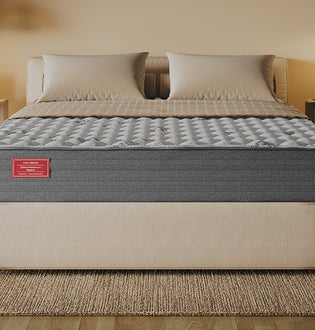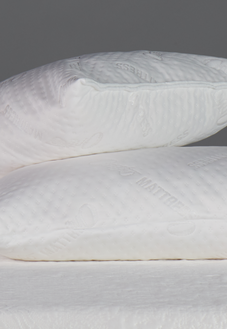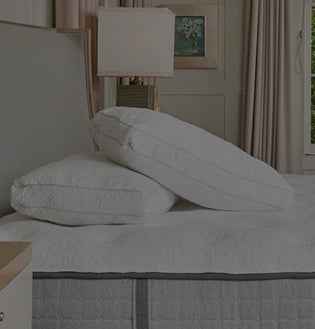A quality mattress should help you fall asleep faster, wake up refreshed, and feel ready to take on the day. But if you’re tossing, turning, or waking up sore, your bed might be telling you it’s time for a change.
This complete Ortho Mattress guide explains how to recognize the signs of mattress fatigue, what sagging and lumps really mean, and how to choose the perfect replacement for your best night’s sleep.
Quick Answer: How Long Does a Mattress Last?
Most mattresses last 6 to 10 years, depending on the materials, weight load, climate, and overall care. However, comfort often declines before a warranty issue appears — so trust how you feel in the morning, not just the calendar.
If you’re waking up sore or not sleeping soundly, it may be time to upgrade your mattress.
Clear Signs It’s Time to Replace Your Mattress
Here’s how to know your bed is past its prime:
-
You wake up sore or stiff. Shoulder, hip, or back pain that fades after you get up means your mattress isn’t supporting you properly.
-
You sleep better elsewhere. If a hotel or guest bed feels more comfortable, your mattress at home may be the culprit.
-
Visible sagging or body impressions. Deep dips that don’t bounce back cause spinal misalignment.
-
Lumps or uneven fill. Older comfort layers can clump, creating pressure points and poor airflow.
-
More motion transfer. Feeling your partner’s every move means the support core is wearing down.
-
New or worsening allergies. Old mattresses accumulate dust, moisture, and allergens.
-
Noisy or creaky support. Squeaks suggest worn coils or a failing foundation.
-
Heat buildup. Softened foam can trap heat over time.
-
Lingering odors or stains. If cleaning doesn’t help, it’s time for a hygienic upgrade.
🛏️ Tip: If multiple signs show up together — especially sagging, soreness, and disrupted sleep — start exploring your next Ortho Mattress today.
What Sagging and Lumps Really Mean
Sagging indicates structural fatigue.
-
In innerspring and hybrid beds, coils lose tension and stop providing balanced support.
-
In foam mattresses, the internal cell structure can break down, reducing responsiveness.
If a sag makes you roll toward the center or arch your lower back unnaturally, your spine is no longer aligned — a major cause of back pain.
Body impressions are normal within limits. Shallow impressions mean the comfort layers are adapting to your shape. But when they become deep enough to feel stuck or misaligned, the comfort foam is worn out.
Lumps usually result from broken-down foam or shifted fiber fill. Massaging the area might offer temporary relief, but the problem often returns. In that case, replacement is the best solution.
Is It the Mattress — or Something Else?
Before replacing your mattress, make sure the problem isn’t somewhere else:
-
Rotate the mattress 180° and see if the discomfort shifts. If it does, uneven wear is likely.
-
Check your foundation. Slats should be sturdy and evenly spaced; a weak base can make even a new mattress feel unsupportive.
-
Reassess your pillow. A pillow that’s too high or too flat can mimic mattress issues. Side sleepers need more loft, while stomach and back sleepers need less.
-
Do a one-night test. Sleep on another bed for a night or two. If you wake up feeling better, your mattress is probably the issue.
Typical Mattress Lifespans by Material
|
Mattress Type |
Average Lifespan |
Notes |
|
Innerspring |
5–7 years |
Coil quality and usage make a big difference. |
|
Hybrid |
7–9 years |
Coil core plus foam comfort layers add durability. |
|
Memory Foam |
6–8 years |
Denser foams tend to last longer. |
|
Latex |
8–12+ years |
Naturally resilient and long-lasting. |
🕓 These are averages, not rules. Factors like humidity, body weight, and skipping a mattress protector can shorten any mattress’s lifespan.
Care Tips to Extend Your Mattress Comfort
Keep your mattress performing at its best with these simple care habits:
-
Use a breathable protector to guard against spills, sweat, and dust.
-
Rotate every few months (unless your mattress is single-sided).
-
Support it properly with a platform, slatted base, or approved adjustable base.
-
Vacuum and air it out every few months to reduce buildup.
-
Check the height. A bed that’s too tall can stress the edges and make getting in or out harder.
✅ Following these care tips can add years of life — and comfort — to your Ortho Mattress.
When Life Changes, Your Mattress Might Need To, Too
Your mattress needs can change just like your lifestyle. Here’s when it might be time to upgrade:
-
New partner or co-sleeping with kids/pets: Look for a larger mattress or one with better motion isolation.
-
Injury or surgery recovery: An adjustable base can help reduce pressure and improve circulation.
-
Hot sleeping: Choose cooling covers, gel-infused foam, or hybrid mattresses with strong airflow.
-
Allergies: A new hypoallergenic mattress and fresh protector can make a big difference.
Where to Start When Upgrading Your Mattress
When it’s time for a replacement, here’s how to find your perfect fit:
-
Pick the right size. Consider your room’s layout, your height, and how many people (or pets) share the bed. Choose your comfort level:
-
Side sleepers: Medium to medium-soft
-
Back or stomach sleepers: Medium-firm
-
Combination sleepers: Balanced medium
-
Start with proven models. Explore our Bestsellers for top-rated comfort and value.
-
Check Clearance Deals for limited-time savings on discontinued models.
-
Review your foundation. Keep your existing base if it meets support guidelines — or upgrade for better ergonomics.
-
Use your trial period wisely. Sleep on your new mattress for at least 14 nights to allow your body to adjust before deciding.
FAQs
How often should I replace a mattress?
Most people replace their mattress every 7–10 years. If you’re experiencing pain or poor sleep earlier, replace it sooner.
Is sagging covered by a warranty?
Warranties cover defects, not natural wear. They often specify a minimum sag depth before coverage applies.
Can a mattress topper fix sagging?
A topper can make a firm mattress feel softer but won’t repair deep sagging or structural issues.
Should I replace my foundation too?
If your base is noisy, bowed, or has wide gaps between slats, replace it. A strong base improves mattress support and longevity.
How do I know when to upgrade if my mattress “looks fine”?
If you’re waking up sore, tossing at night, or sleeping better away from home — your body is giving you the answer.
Ready to Sleep Better?
If your mattress shows these signs of wear — or your body says it’s time — start fresh with Ortho Mattress.
✅ Explore our Bestsellers for proven comfort and support.
💰 Check our Clearance Section for unbeatable deals on top-quality mattresses.
Your best sleep starts with a bed that supports you fully — night after night. Find your closest Ortho Mattress Location here.




